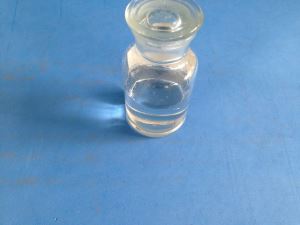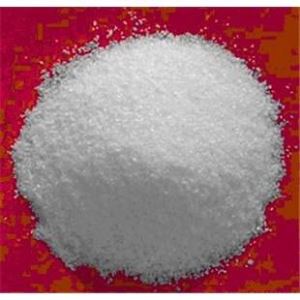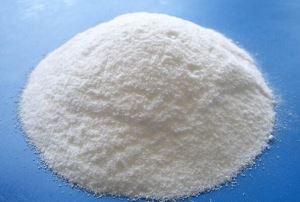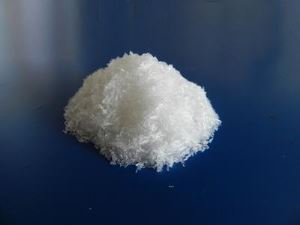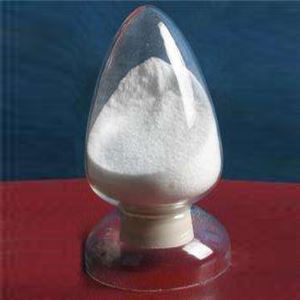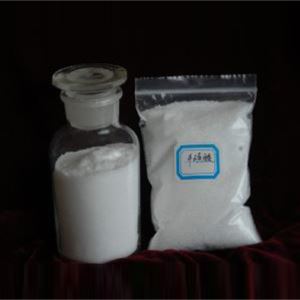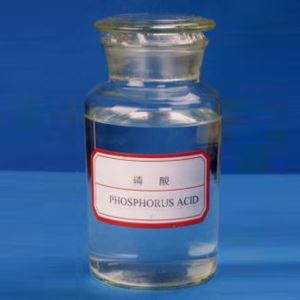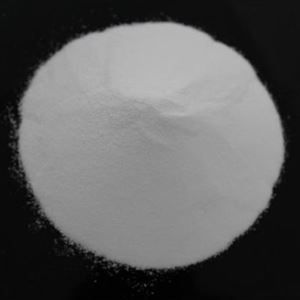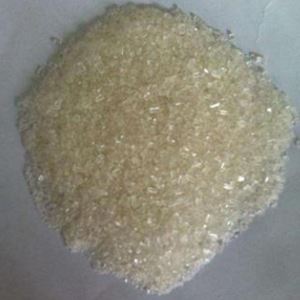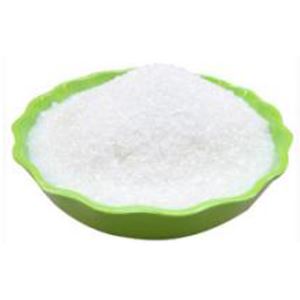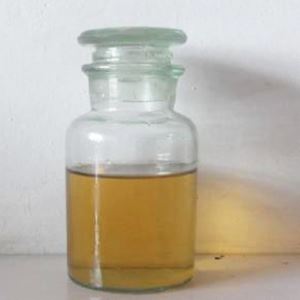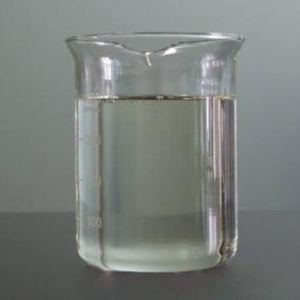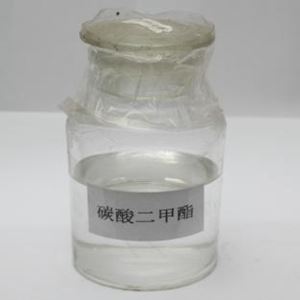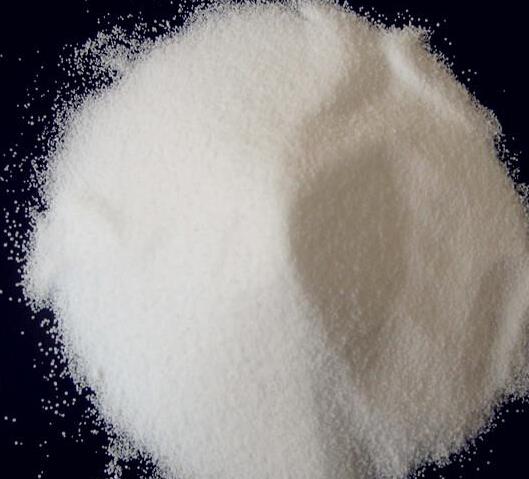


Ammonium Sulphate
-
Payment


-
Origin
China Mainland
-
Minimum Order
1
-
Packing
Pieces
- Contact Now Start Order
- Description
Product Detail
We're one of the professional and experienced manufacturers and suppliers of ammonium sulphate. As one of the famous brands, we warmly welcome you to buy the products made in China which is high in efficiency and quality from us, and also welcome to check the quotation with us.
Section 1: Chemical Product and Company Identification
Product Name: Aluminum Sulfate, Hydrated (ACS & FCC)
CAS#: 7784-31-8
Synonym: Aluminum sulfate octadecahydrate; Cake alum octadecahydrate; Dialuminum sulfate octadecahydrate; Patent alum; Dialuminum trisulate octadecahydrate;Aluminum sulfate (2:3) octadecahydrate; Aluminum trisulfate octadecahydrate; Dialuminum sulfate octadecahydrate
Chemical Name: Sulfuric acid, aluminum salt (3:2), octadecahydrate
Section 2: Composition and Information on Ingredients
Composition:
Name CAS # % by Weight
Aluminum Sulfate, Hydrated 7784-31-8 100
Toxicological Data on Ingredients: Aluminum Sulfate, Hydrated (ACS & FCC): ORAL (LD50): Acute: >9000 mg/kg [Mouse]. >9000 mg/kg [Rat].
Section 3: Hazards Identification
Potential Acute Health Effects:
Hazardous in case of skin contact (irritant), of eye contact (irritant), of inhalation (lung irritant). Slightly hazardous in case of ingestion.
Potential Chronic Health Effects:
CARCINOGENIC EFFECTS: Not available.
MUTAGENIC EFFECTS: Not available.
TERATOGENIC EFFECTS: Not available.
DEVELOPMENTAL TOXICITY: Classified Reproductive system/toxin/female, Reproductive system/toxin/male [SUSPECTED]. The substance may be toxic to the reproductive system, mucous membranes, skin, eyes, Urinary System. Repeated or prolonged exposure to the substance can produce target organs damage.
Section 4: First Aid Measures
Eye Contact:
Check for and remove any contact lenses. In case of contact, immediately flush eyes with plenty of water for at least 15 minutes. Cold water may be used. Get medical attention.
Skin Contact:
In case of contact, immediately flush skin with plenty of water. Cover the irritated skin with an emollient. Remove contaminated clothing and shoes. Cold water may be used. Wash clothing before reuse. Thoroughly clean shoes before reuse. Get medical attention.
Serious Skin Contact:
Wash with a disinfectant soap and cover the contaminated skin with an anti-bacterial cream. Seek medical attention.
Inhalation:
If inhaled, remove to fresh air. If not breathing, give artificial respiration. If breathing is difficult, give oxygen. Get medical attention.
Serious Inhalation: Not available.
Ingestion:
Do NOT induce vomiting unless directed to do so by medical personnel. Never give anything by mouth to an unconscious person. Loosen tight clothing such as a collar, tie, belt or waistband. Get medical attention if symptoms appear.
Serious Ingestion: Not available.
Section 5: Fire and Explosion Data
Flammability of the Product: Non-flammable.
Auto-Ignition Temperature: Not applicable.
Flash Points: Not applicable.
Flammable Limits: Not applicable.
Products of Combustion: Not available.
Fire Hazards in Presence of Various Substances: Not applicable.
Explosion Hazards in Presence of Various Substances:
Risks of explosion of the product in presence of mechanical impact: Not available.
Risks of explosion of the product in presence of static discharge: Not available.
Fire Fighting Media and Instructions: Not applicable.
Special Remarks on Fire Hazards:
It may burn, but it will not ignite.
Fire may produce irritating, corrosive and/or toxic gases.
Special Remarks on Explosion Hazards: Not available.
Section 6: Accidental Release Measures
Small Spill:
Use appropriate tools to put the spilled solid in a convenient waste disposal container. Finish cleaning by spreading water on the contaminated surface and dispose of according to local and regional authority requirements.
Large Spill:
Use a shovel to put the material into a convenient waste disposal container. Finish cleaning by spreading water on the contaminated surface and allow to evacuate through the sanitary system. Be careful that the product is not present at a concentration level above TLV. Check TLV on the MSDS and with local authorities.
Section 7: Handling and Storage
Precautions:
Do not ingest. Do not breathe dust. Wear suitable protective clothing. In case of insufficient ventilation, wear suitable respiratory equipment. If ingested, seek medical advice immediately and show the container or the label. Avoid contact with skin and eyes. Keep away from incompatibles such as oxidizing agents.
Storage: Keep container tightly closed. Keep container in a cool, well-ventilated area.
Section 8: Exposure Controls/Personal Protection
Engineering Controls:
Use process enclosures, local exhaust ventilation, or other engineering controls to keep airborne levels below recommended exposure limits. If user operations generate dust, fume or mist, use ventilation to keep exposure to airborne contaminants below the exposure limit.
Personal Protection:
Splash goggles. Lab coat. Dust respirator. Be sure to use an approved/certified respirator or equivalent. Gloves.
Personal Protection in Case of a Large Spill:
Splash goggles. Full suit. Dust respirator. Boots. Gloves. A self contained breathing apparatus should be used to avoid inhalation of the product. Suggested protective clothing might not be sufficient; consult a specialist BEFORE handling this product.
Exposure Limits:
TWA: 2 (mg (Al)/m) from ACGIH (TLV) [United States]
TWA: 2 (mg (Al)/m) [United Kingdom (UK)]
Consult local authorities for acceptable exposure limits.
Section 9: Physical and Chemical Properties
Physical state and appearance: Solid. (Crystals solid.)
Odor: Odorless.
Taste: Sweet. Mildly Astringent.
Molecular Weight: 342.14 g/mole + (14-18)H2O
Color: White.
pH (1% soln/water): Not available.
Boiling Point: Not available.
Melting Point: Not available.
Critical Temperature: Not available.
Specific Gravity: Density: 1.69 @ 17 deg. C(Water = 1)
Vapor Pressure: Not applicable.
Vapor Density: Not available.
Volatility: Not available.
Odor Threshold: Not available.
Water/Oil Dist. Coeff.: Not available.
Ionicity (in Water): Not available.
Dispersion Properties: See solubility in water.
Solubility:
Easily soluble in hot water.
Soluble in cold water.
It will hydrolyze in water to form sulfuric acid.
Insoluble in alcohol.
Solubility in water: 86.9 g/ 100 ml @0 deg. C; 1104 g/100 ml @ 100 deg. C
Section 10: Stability and Reactivity Data
Stability: The product is stable.
Instability Temperature: Not available.
Conditions of Instability: Incompatible materials, moisture
Incompatibility with various substances: Reactive with oxidizing agents.
Corrosivity: Non-corrosive in presence of glass.
Special Remarks on Reactivity: It melts when gradually heated; At 250 deg. C, it loses its water.
Special Remarks on Corrosivity: May corrode metals in the presence of moisture
Polymerization: Will not occur.
Section 11: Toxicological Information
Routes of Entry: Inhalation. Ingestion.
Toxicity to Animals: Acute oral toxicity (LD50): >9000 mg/kg [Rat].
Chronic Effects on Humans:
DEVELOPMENTAL TOXICITY: Classified Reproductive system/toxin/female, Reproductive system/toxin/male [SUSPECTED]. May cause damage to the following organs: the reproductive system, mucous membranes, skin, eyes, Urinary System.
Other Toxic Effects on Humans:
Hazardous in case of skin contact (irritant), of inhalation (lung irritant).
Slightly hazardous in case of ingestion.
Special Remarks on Toxicity to Animals: Not available.
Special Remarks on Chronic Effects on Humans:
May affect genetic material (mutagenic).
May cause adverse reproductive effects based on animal test data
Special Remarks on other Toxic Effects on Humans:
Acute Potential Health Effects:
Skin: Causes skin irritation, particularly if moisture is present. Symptoms include redness, itching, and pain
Eyes: Causes eye irritation. Symptoms include redness and pain.
Inhalation: Causes mouth and respiratory tract irritation. Symptoms may include coughing, shortness of breath.
It may cause airway constrictin in rare instances. Symptoms are usually transient.
Ingestion: May cause irritation to the gastrointestinal tract. Symptoms may include cramping, nausea, vomiting, diarrhea. Ingestion also produces a feeling of dryness and puckering of the mucous membranes of the mouth and throat. It may affect behavior/central nervous system and cause ataxia and seizures. High blood concentrations of aluminum may cause aluminum-induced encephalopathy with confusion, lethargy, respiratory depression, cognitive impairment, dysarthria, asterixis, seizure, coma. It may also affect the liver. Individuals with renal failure may more readily accumulate toxic levels of aluminum which can result in encephalopathy and seizures.
Chronic Potential Health Effects:
Skin: Repeated or prolonged skin contact may cause irritation, especially if moisture is present.
Ingestion: Repeated or prolonged ingestion may affect metabolism, urinary system, blood (changes in serum composition - e.g. TP, bilirubin, cholesterol), skeletal system, and brain (degenerative changes). High blood concentrations of aluminum may cause aluminum to be deposited in the bones. Accumulation of aluminum in the bone appears to reduce the positive effects of vitamin D and may prevent calcium deposition into the bones. The prevention of calcium deposition leads to the return of the calcium to the blood. This may cause bone/skeletal abnormalties, osteomalacia, painful joints. The elevated serum calcium levels in turn inhibit the release of parathyroid hormone by the parathyroid glands.
Section 12: Ecological Information
Ecotoxicity: Not available.
BOD5 and COD: Not available.
Products of Biodegradation:
Possibly hazardous short term degradation products are not likely. However, long term degradation products may arise.
Toxicity of the Products of Biodegradation: The product itself and its products of degradation are not toxic.
Special Remarks on the Products of Biodegradation: Not available.
Section 13: Disposal Considerations
Waste Disposal:
Waste must be disposed of in accordance with federal, state and local environmental control regulations.
Section 14: Transport Information
DOT Classification: Not a DOT controlled material (United States).
Identification: Not applicable.
Special Provisions for Transport: Not applicable.
Section 15: Other Regulatory Information
Federal and State Regulations:
Connecticut hazardous material survey.: Aluminum sulfate anhydrous (CAS no. 10043-01-3)
Illinois chemical safety act: Aluminum sulfate anhydrous (CAS no. 10043-01-3)
New York release reporting list: Aluminum sulfate anhydrous (CAS no. 10043-01-3)
Pennsylvania RTK: Aluminum sulfate anhydrous (CAS no. 10043-01-3)
Massachusetts RTK: Aluminum sulfate anhydrous (CAS no. 10043-01-3)
Massachusetts spill list: Aluminum sulfate anhydrous (CAS no. 10043-01-3)
New Jersey: Aluminum sulfate anhydrous (CAS no. 10043-01-3)
New Jersey spill list: Aluminum sulfate anhydrous (CAS no. 10043-01-3)
Louisiana spill reporting: Aluminum sulfate anhydrous (CAS no. 10043-01-3)
California Director's List of Hazardous Substances: Aluminum sulfate anhydrous (CAS no. 10043-01-3)-
CERCLA: Hazardous substances.: Aluminum sulfate anhydrous (CAS no. 10043-01-3)-: 5000 lbs. (2268 kg).
No Regulatory information found for Aluminum sulfate hydrate (CAS no. 17927-65-0)
Other Regulations: OSHA: Hazardous by definition of Hazard Communication Standard (29 CFR 1910.1200).
Other Classifications:
WHMIS (Canada):
CLASS D-2B: Material causing other toxic effects (TOXIC).
Aluminum Sulfate anhydrous (CAS no. 10043-01-3) is on the Canadian DSL.
Aluminum Sulfate hydrate (Cas no. 17927-65-0) is not on the Canadian DSL.
DSCL (EEC):
R36/37/38- Irritating to eyes,
respiratory system and skin.
S24/25- Avoid contact with skin and eyes.
S36/37/39- Wear suitable protective clothing,
gloves and eye/face protection.
HMIS (U.S.A.):
Health Hazard: 2
Fire Hazard: 0
Reactivity: 0
Personal Protection: E
National Fire Protection Association (U.S.A.):
Health: 2
Flammability: 0
Reactivity: 0
Specific hazard:
Protective Equipment:
Gloves.
Lab coat.
Dust respirator. Be sure to use an
approved/certified respirator or
equivalent. Wear appropriate respirator
when ventilation is inadequate.
Splash goggles.
Section 16: Other Information
The information above is believed to be accurate and represents the best information currently available to us. However, we make no warranty of merchantability or any other warranty, express or implied, with respect to such information, and we assume no liability resulting from its use. Users should make their own investigations to determine the suitability of the information for their particular purposes. In no event shall we’re liable for any claims, losses, or damages of any third party or for lost profits or any special, indirect, incidental, consequential or exemplary damages, howsoever arising, even if we have been advised of the possibility of such damages.
Basic Info.
Model NO.:RQ-CF01
APPEARANCE:WHITE CRISTALLIZED POWDER
Assay 98.5% MIN
Active oxygen 6.91% MIN
Residue after ignition 0.02%MAX
Chloride and chlorate 0.001% MAX
Manganese 0.00005% MAX
Iron 0.0005% MAX
Heavy metals 0.0005%MAX
Moisture 0.10% MAX
Acid 0.3%MAX
Insolube in water 0.15%MAX
Product Description
Specification
1. Most typical inorganic nitrogen fertilizer.
2. Best fast release, quick acting, and high efficiency.
3. Used for a variety of crops
Item | Specification |
| Appearance | white Crystalline, no visible mechanical impurity |
| Nitrogen | 21% min |
| Moisture | 0.3% max |
| Water insoluble | 0.01% max |
| Fress Acid(H2SO4) | 0.05% max |
| Heary Metal(Pb) | 0.005% max |
4. Ammonium Sulphate Compacted Granular 2-4mm and 5-7mm
5. Ammonium Sulphate Steel Grade Crystal or powder
6. Ammonium Sulphate Caprolactam Grade 0.2-2mm
Adavantage
1. more than ten years of export experience in fertilizer field.
2. all the products are procured from China state-owed enterprise with high and stable quality.
3. competitive price, professional service.
Referred Samples&Packing
FAQ
1. Are you a trade company or factory?
We are a trade company and we have our own factory.
2. What is your main product?
Ammonium sulphate(featured product)
Ammonium chloride
Ammonium bicarbonate
Urea
Sulfur
Other chemicals
3. What are your payment methods?
T/T or L/C. D/P at sight
4. How about the packing?
25 kg, 50kg / bag, bulk, etc.. or as you like
5. How long time you will make shipment?
within 10 days after confirming the order.
6. What documents you provide?
CCIC certificate
SGS
Demanded certificate
7. What is loading port?
most Chinese ports are available
- L-Lysine Hydrochloride 1 Pieces / (Min. Order)
- TRISODIUM PHOSPHATE ANHYDROUS 1 Pieces / (Min. Order)
- L-Lysine HCL 1 Pieces / (Min. Order)
- Sodium Benzoate 1 Pieces / (Min. Order)
- Sodium Bisulphide 99% 1 Pieces / (Min. Order)
- Calcium Chloride Dihydrate 74% or 77% Flakes or Powder 1 Pieces / (Min. Order)
- Barium Chloride Anhydrous 98% Tech.grade 1 Pieces / (Min. Order)
- Barium Chloride Dihydrate 99% Tech.grade 1 Pieces / (Min. Order)
- Barium Carbonate 99% Powder or Granular 1 Pieces / (Min. Order)
- Ammonium Bifluoride 98% Tech.grade 1 Pieces / (Min. Order)
- Ammonium Chloride with Anticaking Tech. Grade 99.5% Industrial 1 Pieces / (Min. Order)


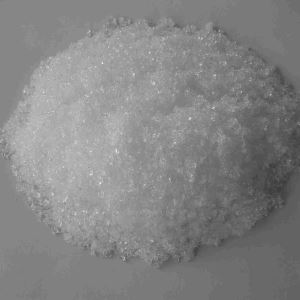

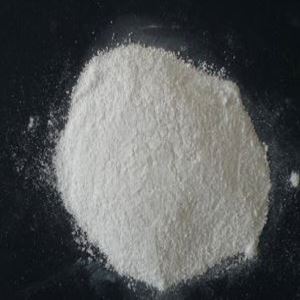
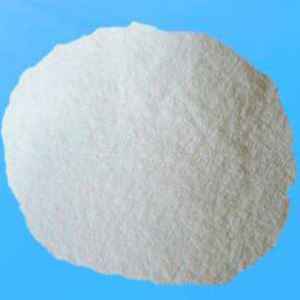
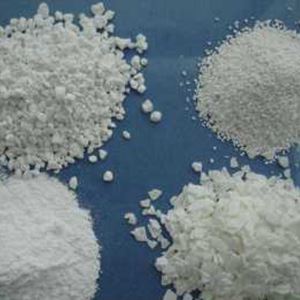
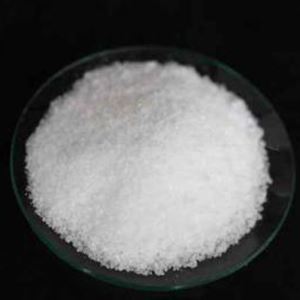
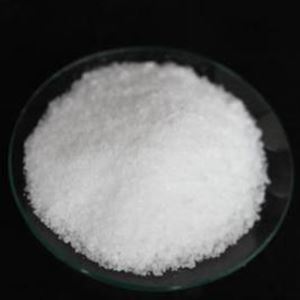
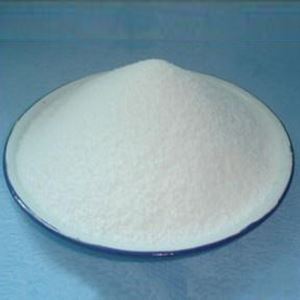

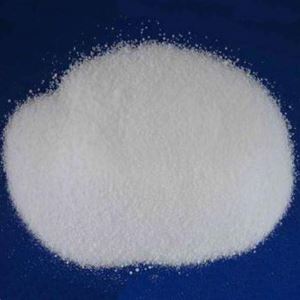
 Favorites
Favorites

